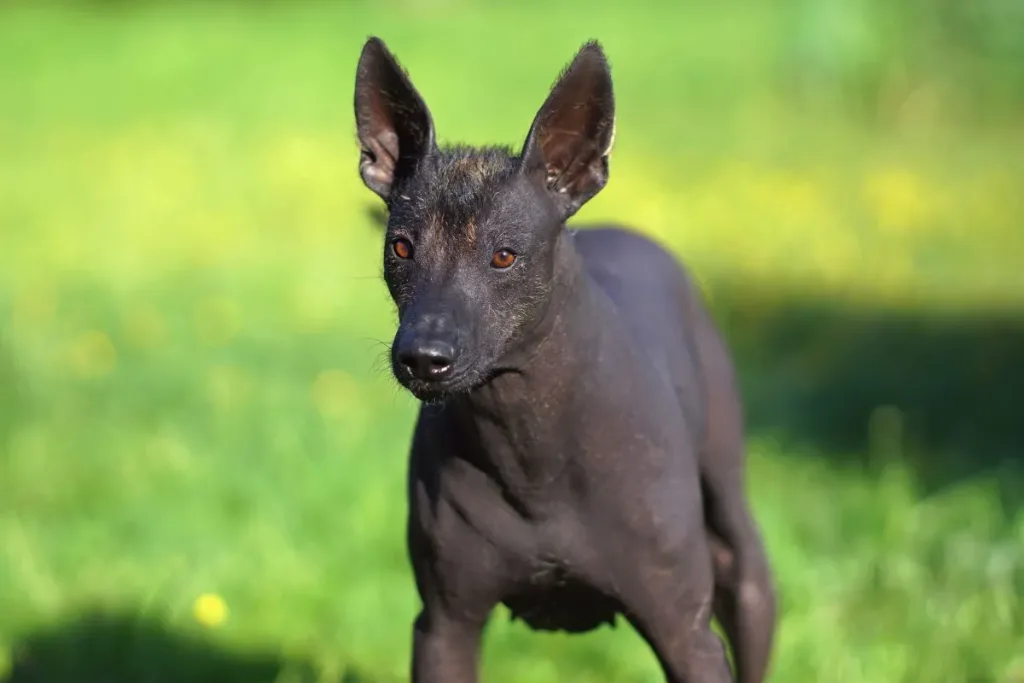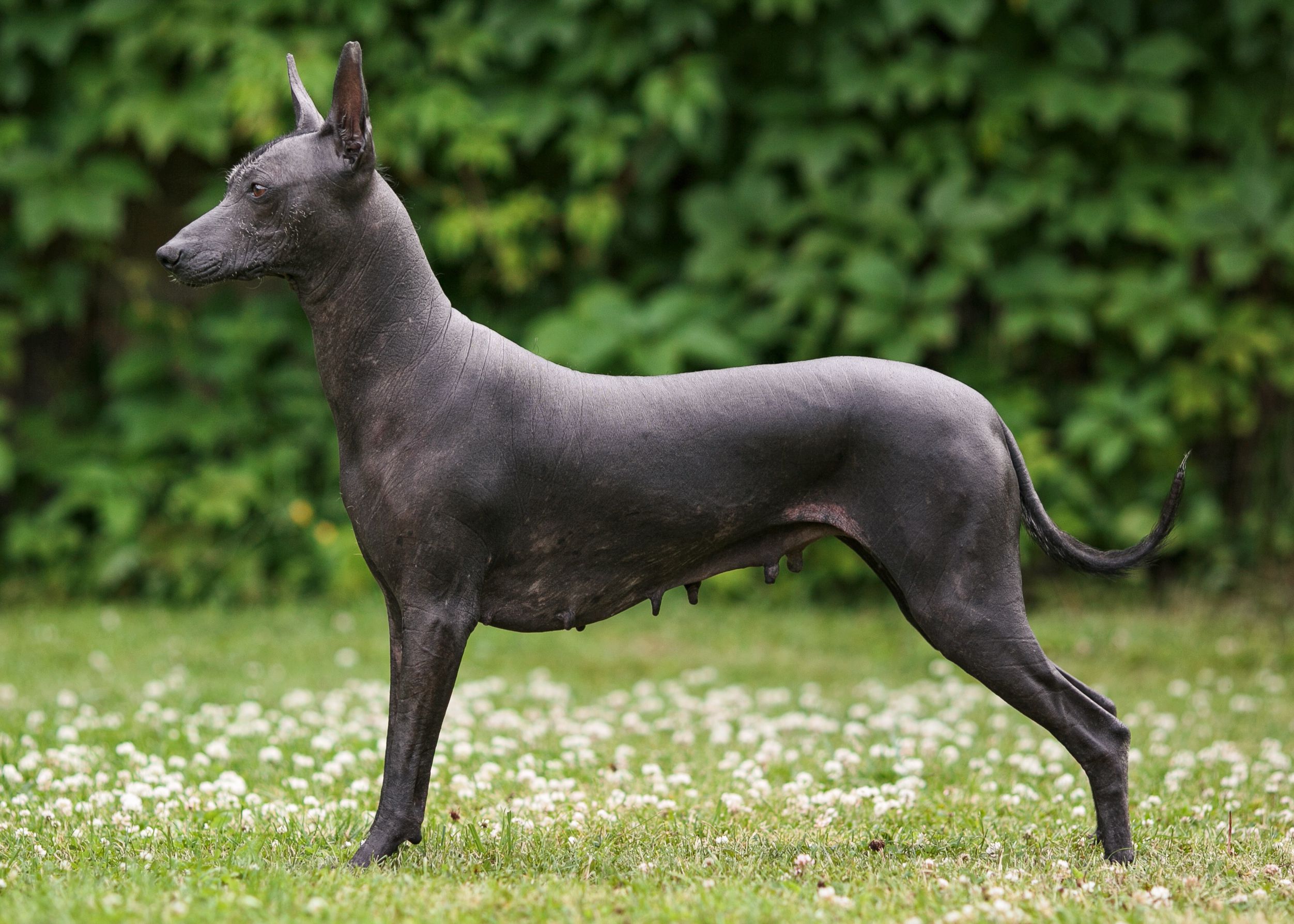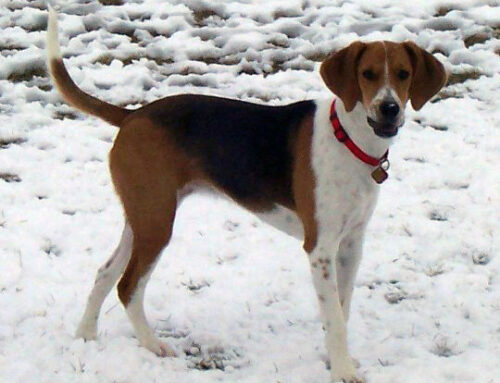Are you considering getting a Xoloitzcuintle as your next furry companion? Also known as the Mexican hairless dog, this breed is a unique and ancient breed that has been around for over 3,000 years. Xoloitzcuintles are known for their hairlessness, intelligence, loyalty, and affectionate nature. They make great pets for those who are looking for an exotic and low-maintenance dog breed. However, before making a decision, it is important to learn more about the breed’s characteristics, temperament, and needs to ensure that it is a good fit for your lifestyle and household.
Breed Category: Non-Sporting Group
Country of Origin: Mexico
Average Size:Medium
Average Weight:10-25 kg
Average Life Span: 12-14 years
Grooming Requirements: Low
Exercise Requirements:Moderate
History and Origin
The Xoloitzcuintle, also known as the Mexican Hairless Dog, is a breed that has been around for thousands of years. The breed is believed to have originated in Mexico, where it was highly valued by the Aztecs and other indigenous peoples. The Xoloitzcuintle was used for a variety of purposes, including hunting, guarding, and even as a source of food.
The breed’s name comes from the Aztec god Xolotl, who was associated with death and lightning. The Xoloitzcuintle was believed to have special powers and was often used in religious ceremonies. The breed was also thought to have healing properties and was used to treat a variety of ailments.
The Xoloitzcuintle was first introduced to Europe in the 16th century, when Spanish conquistadors brought the breed back with them from Mexico. The breed quickly gained popularity among European nobility, who were fascinated by its unique appearance and exotic origins. The Xoloitzcuintle was also used in Europe for hunting and as a guard dog.
In the 19th century, the Xoloitzcuintle was brought to the United States, where it was used primarily as a circus performer. The breed’s unique appearance and intelligence made it a popular attraction, and it was often trained to perform tricks and stunts. However, the breed’s popularity declined in the early 20th century, and it was nearly extinct by the 1950s.
In the 1950s, a group of dedicated breeders in Mexico and the United States began working to revive the Xoloitzcuintle. The breed was recognized by the Mexican Kennel Club in 1956, and by the American Kennel Club in 2011. Today, the Xoloitzcuintle is still a relatively rare breed, but it has a dedicated following of enthusiasts who appreciate its unique history and characteristics.
The Xoloitzcuintle is a medium-sized dog that comes in three varieties: hairless, coated, and intermediate. The hairless variety is the most well-known, and is characterized by its smooth, hairless skin and prominent ears. The coated variety has a short, dense coat, while the intermediate variety has a mix of hair and bare skin. The breed is known for its intelligence, loyalty,

Size and Breed Category
The Xoloitzcuintle, also known as the Mexican Hairless Dog, is a unique breed that comes in three sizes: toy, miniature, and standard. The toy size stands at 25-35cm and weighs up to 4kg, while the miniature size stands at 36-45cm and weighs up to 8kg. The standard size stands at 46-60cm and weighs up to 25kg. Despite their size differences, all Xoloitzcuintles share the same distinctive features, including their hairlessness, wrinkled skin, and almond-shaped eyes. They come in a variety of colours, including black, grey, red, and bronze.
The Xoloitzcuintle is a member of the non-sporting breed category, which means they were not bred for a specific purpose such as hunting or herding. Instead, they were kept as companions and guard dogs by the ancient Aztecs. Today, they are still valued for their loyalty and protective nature. They are also known for their intelligence and trainability, making them a popular choice for obedience competitions. Despite their hairlessness, Xoloitzcuintles require minimal grooming and are generally low-maintenance dogs. They are a unique and fascinating breed that is sure to turn heads wherever they go.
Fur Length and Colour
The fur of the Xoloitzcuintle is typically short and smooth, with a glossy appearance. The breed comes in a variety of colours, including black, gray, bronze, and red. Some Xoloitzcuintles may also have white markings on their chest and feet. The fur is often described as being velvety to the touch, and it is said to be hypoallergenic, making it a popular choice for people with allergies. The breed is also known for its lack of hair on certain parts of its body, such as the ears and tail, which gives it a unique appearance.
The colour of the Xoloitzcuintle’s fur can vary depending on the individual dog. Some may have a solid colour, while others may have a combination of colours or patterns. The breed is known for its striking appearance, with many Xoloitzcuintles having a sleek and elegant look. The fur is also said to be easy to maintain, requiring only occasional brushing to keep it looking its best. Overall, the Xoloitzcuintle’s fur is an important part of its unique appearance, and it is one of the many features that make this breed so special.

Termperament and Trainability
The Xoloitzcuintle is a breed of dog that is known for its unique temperament. They are often described as being very loyal and affectionate towards their owners, but can also be quite reserved around strangers. This breed is also known for being very intelligent and independent, which can make them somewhat challenging to train. However, with patience and consistency, they can be taught a variety of commands and tricks. It is important to note that the Xoloitzcuintle can be quite sensitive, so positive reinforcement training methods are recommended.
When it comes to trainability, the Xoloitzcuintle can be a bit of a mixed bag. While they are generally quite intelligent and eager to please their owners, they can also be quite stubborn at times. This breed is known for being independent and strong-willed, which can make them difficult to train if they are not properly motivated. However, with the right approach, the Xoloitzcuintle can be trained to do a variety of tasks, including obedience training, agility training, and even therapy work. It is important to start training this breed early on in life, as they can be quite sensitive to changes in their environment and routine. With patience and consistency, the Xoloitzcuintle can be a wonderful companion and a loyal friend.

Known Health Conditions
Xoloitzcuintles are prone to certain health conditions that owners should be aware of. One of the most common issues is hip dysplasia, which is a genetic condition that affects the hip joint. This can cause pain, lameness, and arthritis in the affected joint. Xoloitzcuintles may also develop patellar luxation, which is when the kneecap dislocates from its normal position. This can cause pain and difficulty walking, and in severe cases, surgery may be required to correct the problem. Additionally, Xoloitzcuintles may be prone to skin allergies and infections, which can cause itching, redness, and hair loss. It is important for owners to keep their Xoloitzcuintle’s skin clean and dry to prevent these issues.
Another health condition that Xoloitzcuintles may experience is dental problems. They are prone to developing periodontal disease, which is a bacterial infection that affects the gums and teeth. This can cause bad breath, tooth loss, and pain. Owners should brush their Xoloitzcuintle’s teeth regularly and provide them with dental chews to help prevent this condition. Xoloitzcuintles may also be at risk for eye problems, such as cataracts and progressive retinal atrophy, which can cause vision loss. Regular eye exams can help detect these issues early and prevent further damage. Overall, Xoloitzcuintle owners should be aware of these potential health conditions and work with their veterinarian to keep their pet healthy and happy.

Openness to Strangers
Xoloitzcuintles, also known as Mexican Hairless dogs, have a reputation for being friendly and welcoming to strangers. These dogs are known for their sociable nature and are often described as being very affectionate towards people they meet for the first time. They are not known to be aggressive towards strangers and are generally very easy-going and relaxed in new situations. Xoloitzcuintles are also known for their loyalty and devotion to their owners, which may contribute to their friendly nature towards strangers.
Despite their friendly nature, Xoloitzcuintles can be quite reserved and independent at times. They are not known for being overly clingy or needy, and may prefer to spend time alone or with their owners rather than with strangers. However, they are generally very adaptable and can adjust well to new people and environments. Xoloitzcuintles are also known for their intelligence and trainability, which may contribute to their ability to interact well with strangers. Overall, these dogs are known for their friendly and welcoming nature, making them a popular choice for families and individuals looking for a sociable and easy-going companion.
Playfulness Level
The Xoloitzcuintle, also known as the Mexican Hairless Dog, is a highly playful breed that loves to engage in various activities. They are known for their high energy levels and their love for playtime. Whether it’s playing fetch, running around in the park, or simply chasing after their owners, Xoloitzcuintles are always up for some fun. They are also highly intelligent and can be trained to perform various tricks and tasks, making them great companions for those who enjoy spending time with their pets.
Despite their playful nature, Xoloitzcuintles are also known for their calm and gentle demeanor. They are great with children and other pets, and are often used as therapy dogs due to their calming presence. However, they do require regular exercise and mental stimulation to keep them happy and healthy. Owners of Xoloitzcuintles should be prepared to provide them with plenty of opportunities for play and exercise, as well as training and socialization to ensure they are well-behaved and obedient. Overall, the Xoloitzcuintle is a highly playful and loving breed that makes a great addition to any family.
Suitability as a Pet for Children
Xoloitzcuintles, also known as Mexican Hairless Dogs, have a unique appearance with their hairless bodies and wrinkled skin. They are a highly intelligent breed and are known for their loyalty and affection towards their owners. Xoloitzcuintles are also very active and require regular exercise to keep them healthy and happy. They are generally good with children and make great family pets, but it is important to socialize them from a young age to ensure they are comfortable around people and other animals. Xoloitzcuintles are also low maintenance when it comes to grooming, as they do not shed much hair.
Exercise Needs
Xoloitzcuintles are a highly active breed that require plenty of exercise to maintain their physical and mental health. As a medium-sized dog, they need at least 60 minutes of daily exercise, which can be achieved through a combination of walks, runs, and playtime. It is important to note that Xoloitzcuintles have a high prey drive and may chase after small animals, so it is best to keep them on a leash or in a securely fenced area during exercise. Additionally, they are sensitive to extreme temperatures and should not be exercised in hot or cold weather conditions.
In addition to physical exercise, Xoloitzcuintles also benefit from mental stimulation. They are intelligent dogs that enjoy learning new tricks and participating in activities such as agility training and obedience competitions. Interactive toys and puzzle games can also provide mental stimulation and prevent boredom. It is important to provide a variety of activities to prevent the Xoloitzcuintle from becoming bored or destructive. With proper exercise and mental stimulation, the Xoloitzcuintle can be a happy and healthy companion for their owner.

Suitability for a Multi-Pet Family
Xoloitzcuintles have been known to coexist peacefully with other pets in the household. They are generally friendly and sociable, and can adapt well to living with other animals. However, as with any breed, individual temperament and socialization play a significant role in determining how well they get along with other pets. It is important to introduce them to other animals slowly and carefully, and to supervise their interactions until you are confident that they can coexist peacefully.
Housing Requirements
Xoloitzcuintles require a living space that is large enough for them to move around comfortably. They are an active breed and need plenty of room to exercise. A minimum of 30 square meters of living space is recommended for this breed. The living space should be well-ventilated and have access to natural light. Xoloitzcuintles are sensitive to extreme temperatures, so the living space should be kept at a comfortable temperature. It is important to provide a comfortable bed for the Xoloitzcuintle to rest in. The bed should be large enough for the dog to stretch out in and should be made of a comfortable material.
Xoloitzcuintles require a balanced diet that is rich in protein and nutrients. They should be fed a high-quality dog food that is appropriate for their age and activity level. It is important to provide fresh water at all times. Xoloitzcuintles are prone to dental problems, so it is important to provide them with dental chews and toys to help keep their teeth clean. They also require regular exercise to maintain their health and well-being. Daily walks and playtime in a secure, fenced area are recommended. Xoloitzcuintles are a loyal and affectionate breed that thrive on human companionship, so it is important to provide them with plenty of attention and affection.
Summary
Xoloitzcuintles have been kept as pets for centuries and are known for their loyalty and protective nature. They are also low-maintenance dogs, requiring minimal grooming and exercise. However, they can be wary of strangers and may require early socialization and training. Overall, Xoloitzcuintles can make great pets for those who are willing to put in the effort to properly train and socialize them.
Xoloitzcuintle Dog FAQS
Xoloitzcuintles are intelligent and eager to please, making them relatively easy to train with positive reinforcement.
Yes, Xoloitzcuintles are known to be good with children and make great family pets.
Yes, Xoloitzcuintles are hypoallergenic and produce less dander than other breeds.
Xoloitzcuintles are not known to be excessive barkers, but may bark to alert their owners of strangers or unusual activity.
Xoloitzcuintles are generally healthy, but can be prone to dental issues and skin allergies.
Yes, Xoloitzcuintles are an active breed and require at least 30-60 minutes of exercise daily.
Xoloitzcuintles have a lifespan of 12-14 years on average.
Xoloitzcuintles have short hair and require minimal grooming. Brushing once a week and occasional baths are sufficient.
A Xoloitzcuintle can grow up to 76 cm in height.
The average weight of a Xoloitzcuintle is between 10-25 kg.






Leave A Comment